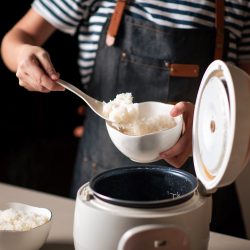Many people never rinse their rice and have no intention of starting. But maybe you've recently seen someone else who does. Now you're curious, were you supposed to be rinsing your rice? Should you rinse rice if you use a rice cooker? We've checked with dieticians and cooks for everything you need to know to answer this question.
Yes, rice can be rinsed, whether you cook on a stove or with a rice cooker. In some countries, rice is often dirty and needs to be rinsed for basic cleanliness. If you're in the US buying packaged rice, cleaning is typically not necessary. However, rinsing can still be a helpful way to remove starch. This can create a better result and be beneficial for your health.
In this post, we'll cover what happens if you don't rinse rice, why you might want to rinse your rice, whether rinsing will make your rice sticky, and more. We'll also explain just why getting rid of extra starch can have an impact on your diet, and it's not exactly the reason you think. So stick around and learn more!
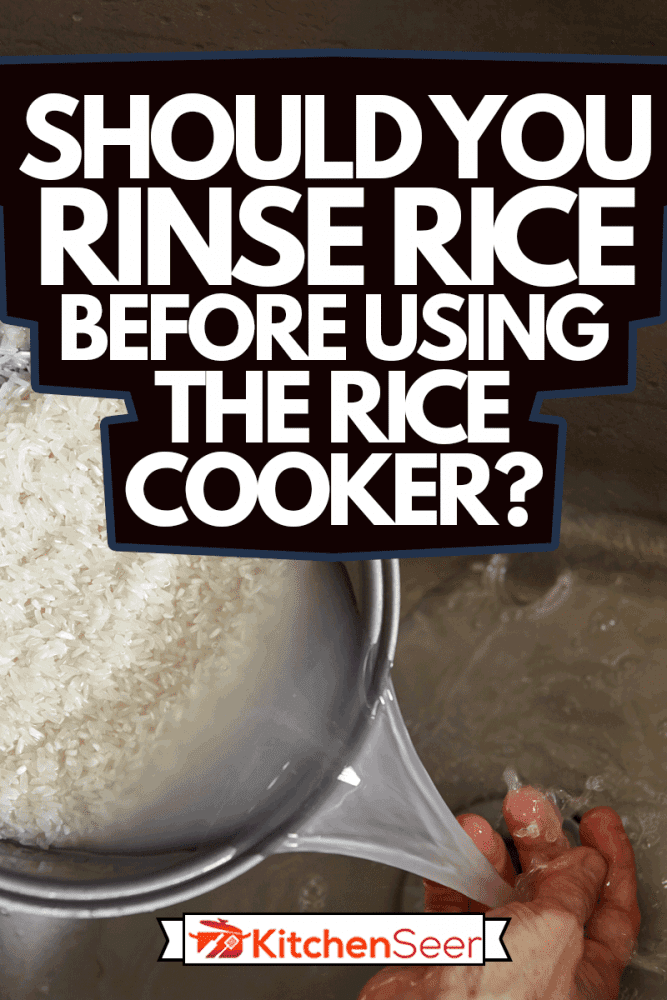
What Happens If You Don't Rinse rice?
There are two primary purposes for rinsing rice. These are to remove dirt and other contaminants and remove residual starch.
Cleaning Dirt From Rice
Depending on where you live, rice isn't always dirty. In fact, in the United States, bagged rice frequently comes precleaned. However, this isn't true everywhere.
Cleaning dirt and other contaminants from rice are the most apparent reasons to rinse it off. The dirt might be pretty visible or may be so small you can't catch it. In some countries, it's not unheard of to even find small rocks in a bag of rice.
On top of that, there are also toxins you can't see. Heavy metals like lead can sometimes accumulate in rice if they're present in the soil. Some studies show that washing rice can help reduce these dangerous additions.
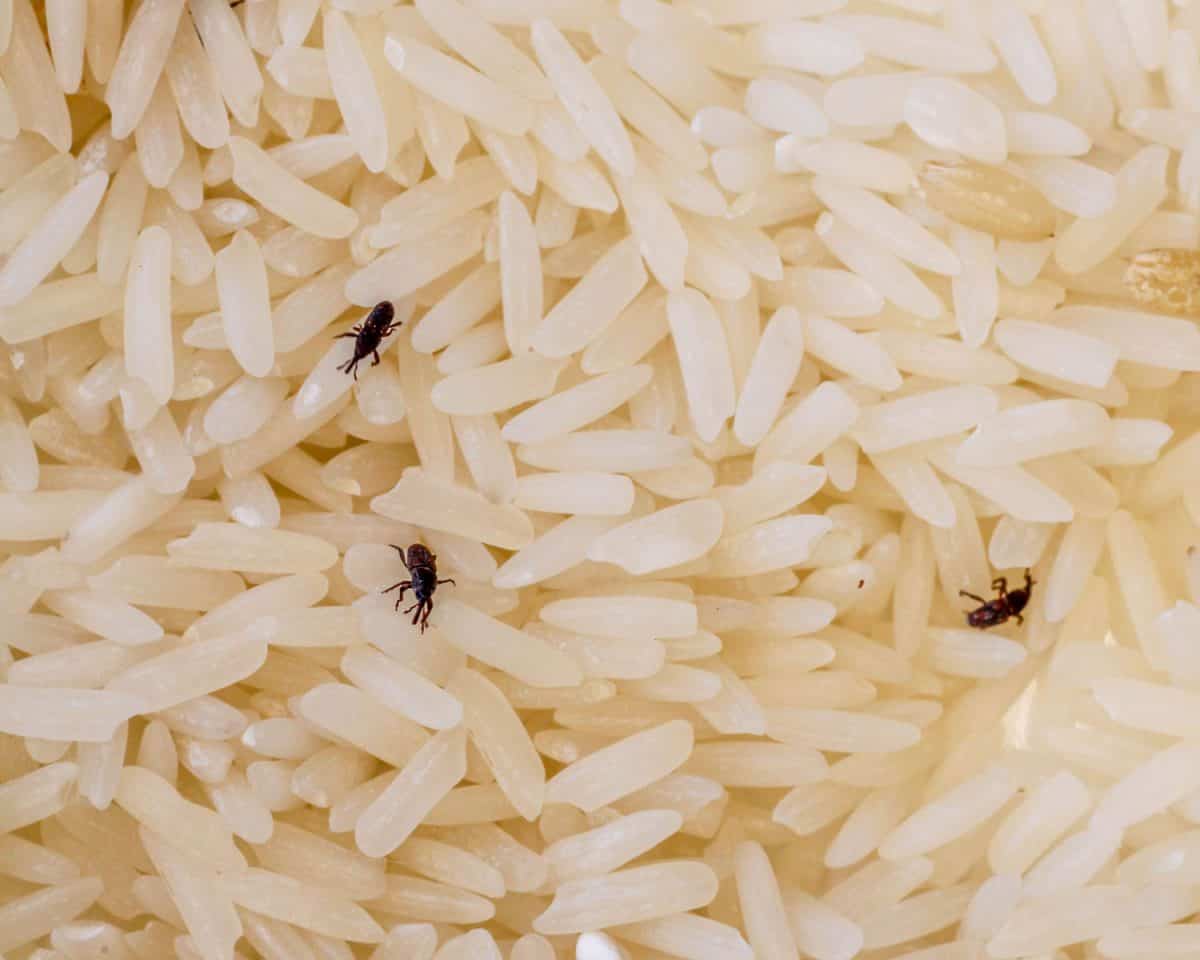
Washing Off The Starch
As rice makes its way across the country/world, the individual grains rub against each other and break down. Rice is full of starch, and as this starch takes a beating, it leaves a fine starch powder behind that coats the rice grains.
If you don't wash the starch off, it can change the texture of your rice. Results may be less than ideal, though this varies with the type of rice you're using. For example, brown rice is very high in starch and is likely gummy without proper rinsing. Conversely, basmati and other long-grain kinds of rice have less starch.
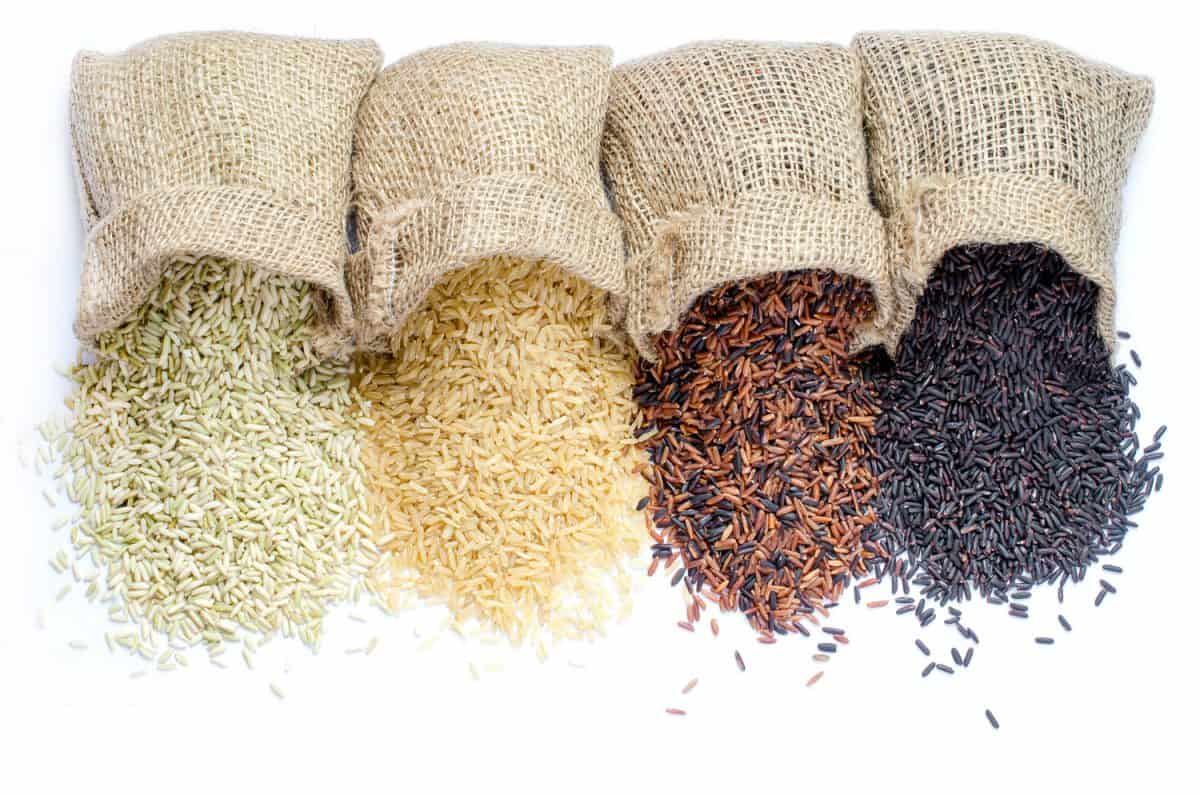
Does Rinsing Rice Make It Sticky?
Rinsing rice does not make it sticky. It can have the opposite effect. Starch in rice can be one of the reasons your rice turns out sticky. By rinsing away excess starch, you may prevent sticky rice.
However, if you have already rinsed your rice and still have issues with mushy texture, it's important to realize that other things can cause this. One of the most common errors is using too much water.
This is especially true when using a rice cooker. Rice cookers do not lose as much water as stovetop boiling. Instead, they keep the liquid trapped with the rice and cook with steam.
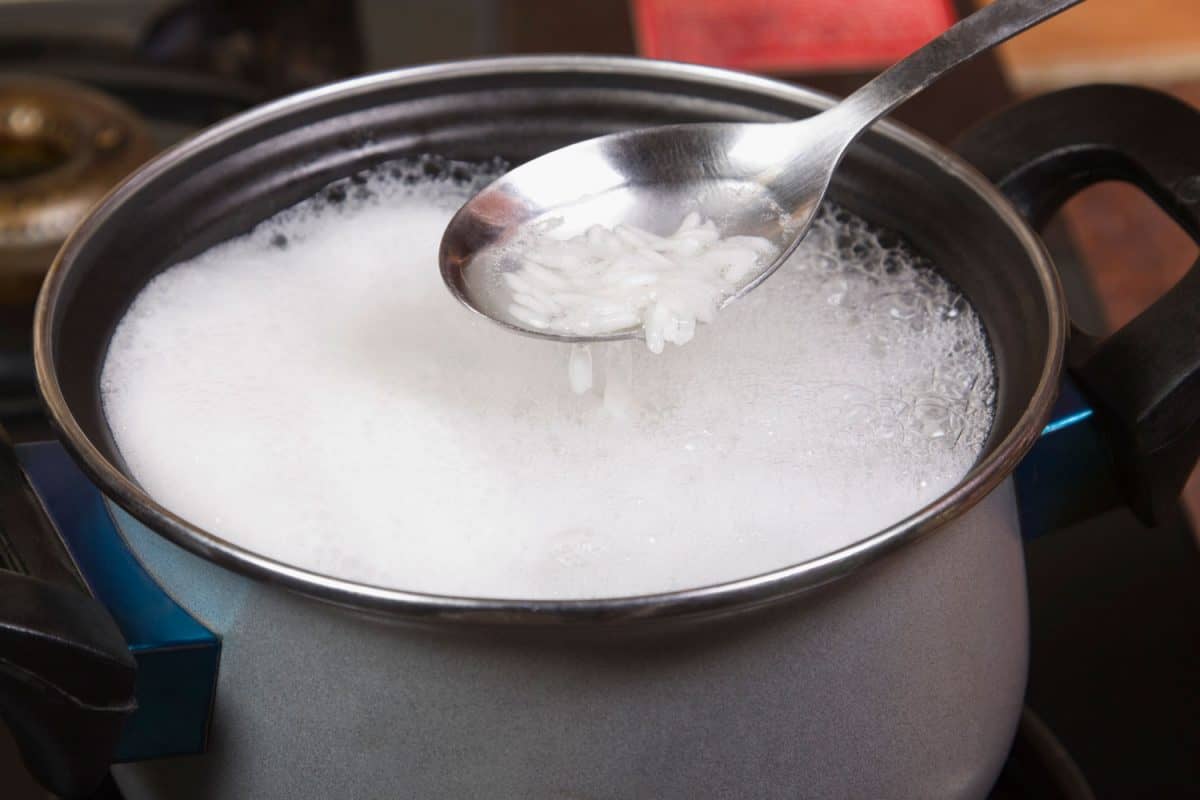
Since so little water gets lost to evaporation, you don't need to add as much water in the first place. If your rice is always coming out sticky, try adjusting the water content instead.
Do not follow the directions on the bag of rice, which only applies to stovetop cooking. Use the tips that come with your rice cooker instead. Or, one cup of water to one cup of rice is a good starting point. You can adjust the exact measurements based on your results.
What Rice Should You Not Rinse?
Some kinds of rice say right on the label that they are "enriched." Many brands of enriched rice are coated with a dusting that adds various nutrients. The package will warn against rinsing these, and that is for a good reason. They're precleaned, and rinsing would wash away all those added nutrients.
However, if your rice's packaging doesn't specifically say not to clean it, feel free to. Not all enriched rice uses a washable nutrient coating. Some enriched rice is grown that way. The plant is modified to target optimum nutrition for ideal results, meaning that rinsing it isn't necessary.
It may also not be helpful to rinse rice when the recipe calls for your rice to be a bit sticky anyway. Some dishes, such as risotto, need the starch present in rice to turn out correctly. Removing the starch will derail your efforts. Be sure to read recipes carefully and avoid rinsing when instructed.
How Long Do You Rinse Rice?
Cleaning dirty rice is simple and can be done by running it under cold water. The best way to remove starch is to put the rice in a bowl. Fill the bowl with cold water, swirl the rice around, and drain.
The water will look milky or cloudy. When it runs clear, that's a sign it's clean. With the starch now gone, you've completed your job.
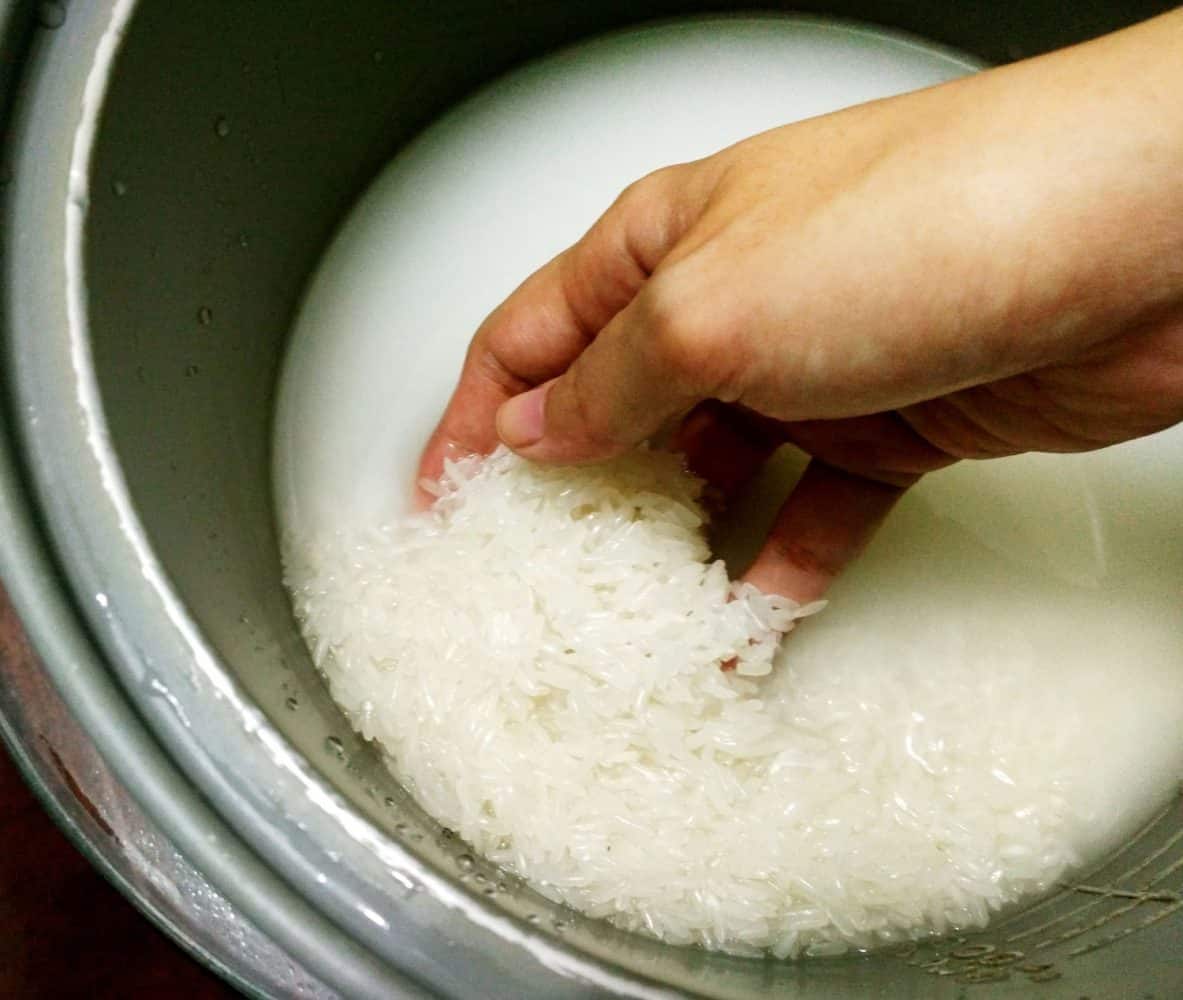
You can also let the rice soak for half an hour. This enables the moisture to soak throughout the rice, giving it a more even texture when cooked.
Does Rinsing Rice Reduce Carbs?
One of the most common carbohydrates is starch, found in rice and many other conventional foods. Rinsing rice can help remove starch and reduce the overall carbohydrates. But, how you rinse the rice matters.
Many people like to rinse their rice in cold water before cooking. This might get rid of some starch, but it's a minimal amount. You won't be able to make a significant change to your diet with this method alone.
Instead, try this technique, recommended by Livestrong:
- Rinse your rice in cold water.
- Then, boil two cups of water for every cup of rice in a pot over high heat.
- Add salt as desired.
- When the water is at a rapid boil, add your rice.
- Cook for five minutes.
- Remove the pot from the stove and rinse the rice in cold water.
- Drain the excess water - it should look white. That's the starch!
- Continue to rinse and drain the rice until the water looks clear.
- Put the drained rice back on the stove on low heat. Cook for 15 minutes covered.
- Fluff with a fork, checking that the rice is ready. If it's not soft enough, let it cook for another five minutes until satisfied.
It might seem like a lot of work, but it's also high-reward. Not only do you cut down on the starch, but this method retains more micronutrients and cuts arsenic, an heavy metal often found in rice, in half.
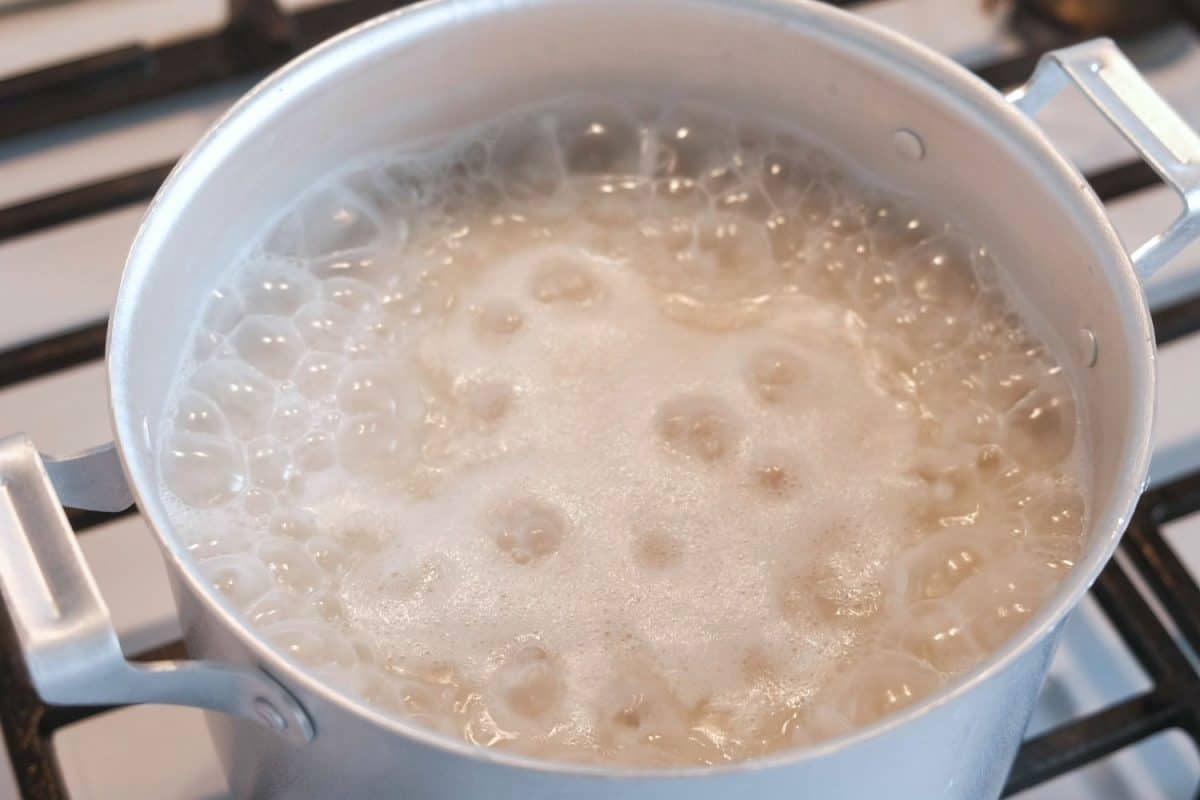
To Wrap It Up
We found that you should never wash rice if the package specifically directs against it. This is particularly common with some kinds of enriched rice. Other types of rice do not need rinsing, especially if the rice is from the United States.
However, rinsing rice has many advantages, even if it's not necessary for cleaning. Many cooks agree that removing starch creates a better-finished product in most cases, making the rice less sticky or gummy.
It also can lower the total carbohydrates. If you're happy with how your rice turns out, you don't have to rinse already-clean rice. But if you're having trouble getting the perfect texture, give rinsing and reducing starch a try.
Made it to the end? Check out these helpful related rice posts below!
Does Rice Go Bad In The Pantry? [Inc. Tips for Keeping Rice Extra Fresh]
6 Ways To Strain Rice Without A Strainer

![Pour water into rice - How Much Water To Rice In Rice Cooker [Ratio By Type Of Rice]](https://kitchenseer.com/wp-content/uploads/2022/03/Pour-water-into-rice-250x250.jpg)

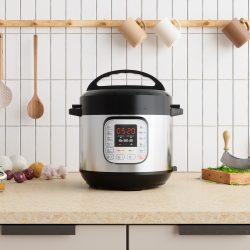
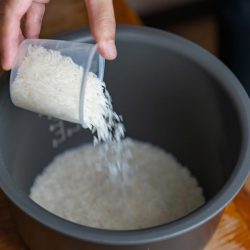
![A rice cooker filled with freshly cooked rice, Can Rice Cookers Cook Brown Rice? [And How to]](https://kitchenseer.com/wp-content/uploads/2022/02/A-rice-cooker-filled-with-freshly-cooked-rice-250x250.jpg)
